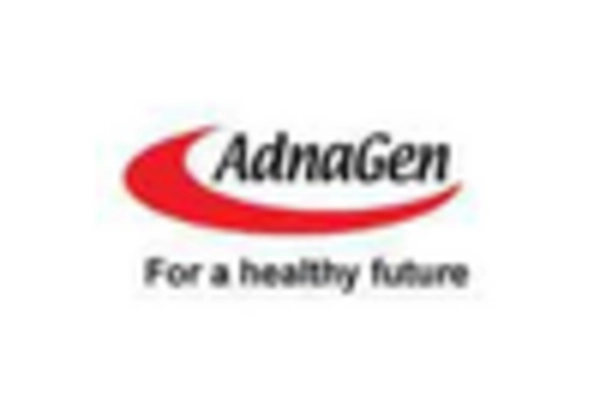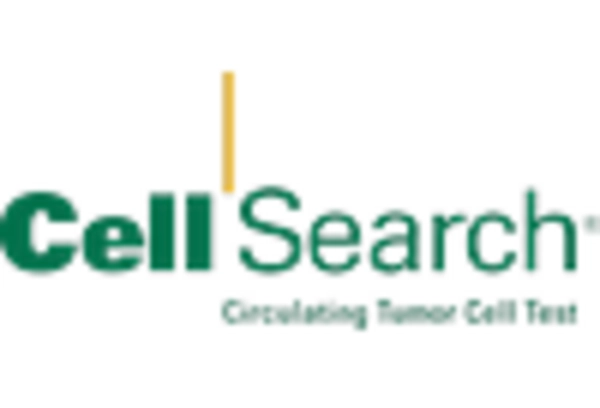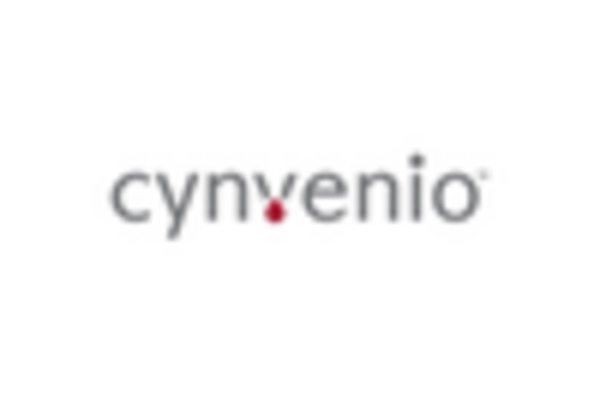Supportive Government Policies
Government policies in China are increasingly supportive of the circulating tumor-cell market, fostering an environment conducive to innovation and growth. Initiatives aimed at enhancing cancer care infrastructure and promoting research in oncology are being implemented. For instance, the Chinese government has allocated substantial funding to cancer research programs, with a focus on developing advanced diagnostic tools, including those related to circulating tumor cells. By 2025, it is anticipated that government investments in cancer-related technologies will surpass $5 billion. This support not only encourages private sector participation but also facilitates collaborations between academia and industry, ultimately leading to the development of cutting-edge solutions in the circulating tumor-cell market.
Rising Demand for Personalized Medicine
The demand for personalized medicine in China is significantly influencing the circulating tumor-cell market. As patients increasingly seek tailored treatment options, the role of circulating tumor cells in guiding therapy decisions is becoming more prominent. By 2025, it is estimated that the personalized medicine market will account for over 30% of the total oncology market in China. This shift towards individualized treatment plans is likely to drive the adoption of circulating tumor-cell technologies, as they provide critical insights into tumor biology and treatment response. Healthcare providers are recognizing the value of these technologies in optimizing patient outcomes, which may lead to a broader integration of circulating tumor-cell assays into clinical practice. Consequently, the market is expected to expand as personalized medicine continues to gain traction.
Advancements in Liquid Biopsy Technologies
The circulating tumor-cell market is being propelled by significant advancements in liquid biopsy technologies within China. These innovations allow for non-invasive cancer diagnostics, enabling the detection of circulating tumor cells in blood samples. By 2025, the liquid biopsy market is projected to reach $2 billion, with a substantial portion attributed to circulating tumor-cell applications. The ability to monitor treatment response and detect recurrences through liquid biopsies is likely to enhance patient management strategies. Moreover, as healthcare providers increasingly adopt these technologies, the demand for circulating tumor-cell assays is expected to rise. This trend indicates a shift towards personalized medicine, where treatment plans are tailored based on real-time insights from circulating tumor-cell analysis, thereby driving market growth.
Increasing Investment in Oncology Research
The circulating tumor-cell market in China is experiencing a surge in investment directed towards oncology research. This trend is driven by both public and private sectors recognizing the critical need for advanced cancer diagnostics and treatment options. In 2025, funding for cancer Market Research Future is projected to exceed $10 billion, reflecting a commitment to innovative solutions. This influx of capital is likely to enhance the development of technologies related to circulating tumor cells, thereby expanding the market. Furthermore, collaborations between research institutions and biotechnology firms are expected to foster breakthroughs in early detection and personalized medicine, which are essential for improving patient outcomes. As a result, the circulating tumor-cell market is poised for significant growth, supported by a robust research ecosystem that prioritizes cancer care.
Growing Awareness of Early Cancer Detection
In China, there is a notable increase in public awareness regarding the importance of early cancer detection, which is significantly impacting the circulating tumor-cell market. Educational campaigns and health initiatives are emphasizing the benefits of early diagnosis, leading to a higher demand for advanced diagnostic tools. As of 2025, it is estimated that approximately 60% of the population is aware of circulating tumor cells and their role in cancer diagnostics. This heightened awareness is likely to drive the adoption of circulating tumor-cell technologies, as patients and healthcare providers seek more effective screening methods. Consequently, the market is expected to expand as healthcare systems integrate these technologies into routine cancer screening protocols, ultimately improving survival rates and patient outcomes.
















Leave a Comment